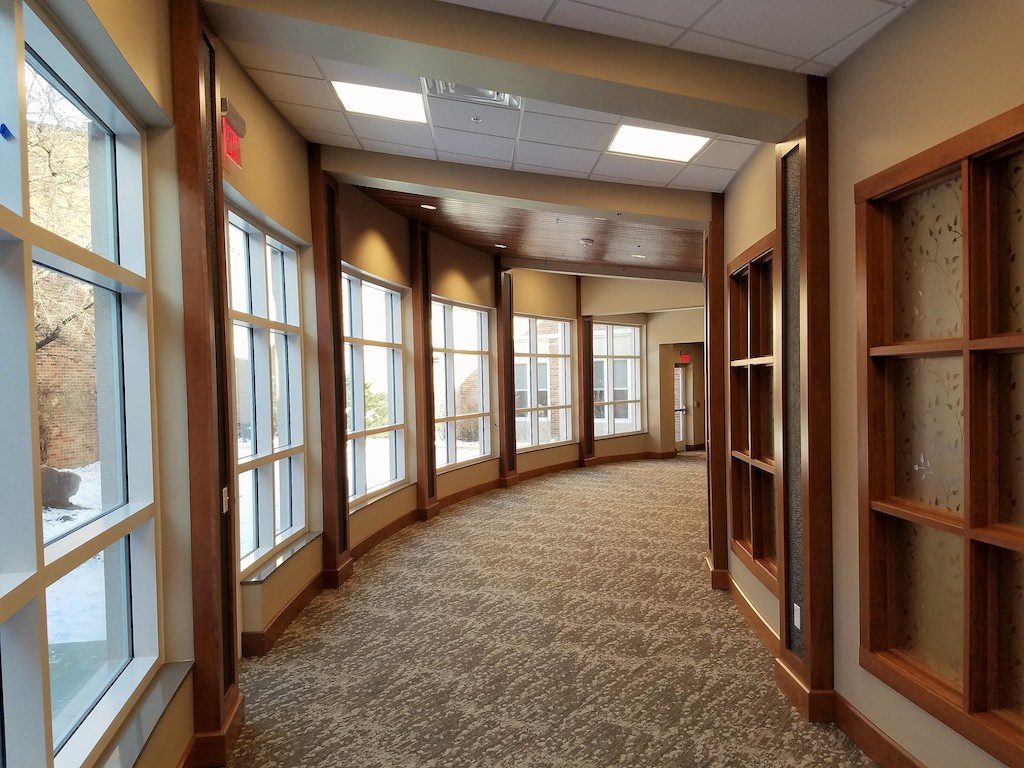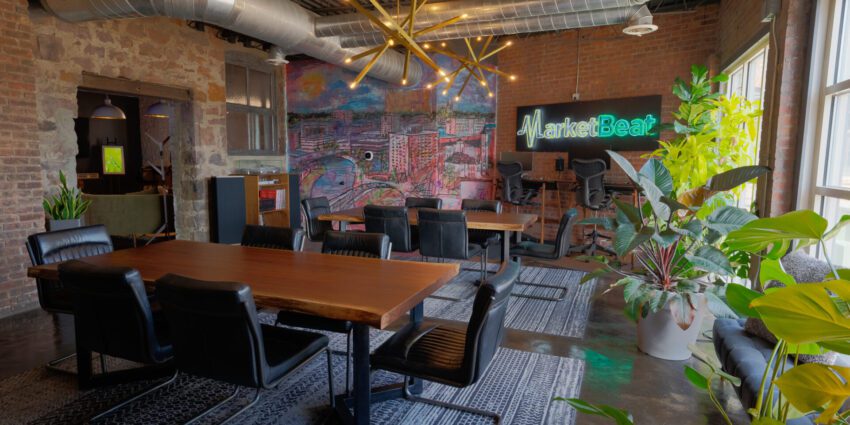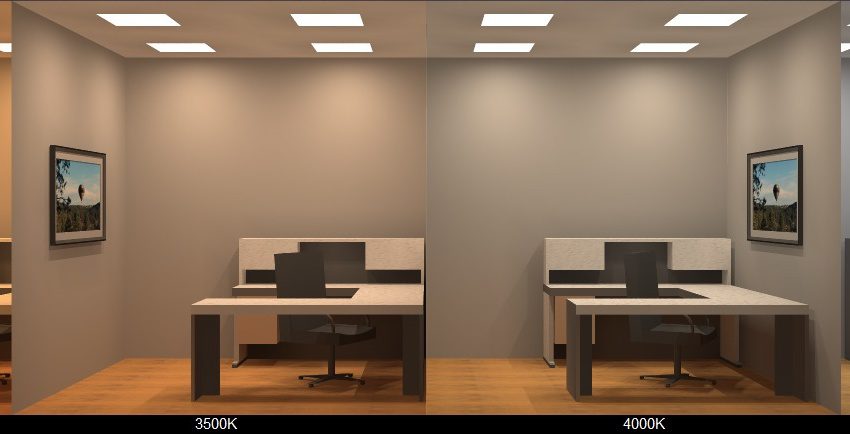Feeling drained? Adjust lighting to boost energy levels

This piece is presented by TSP.
Your body may be trying to tell you something: To function at optimal levels in work and life, you need a solid sleep schedule and plenty of daylight in-between. Your body is attuned to the sun’s path across the sky, whether you identify yourself as a morning person or a night owl. But if you work mostly indoors — especially in a building with few windows — you’re bound to feel out of step.
Hormone levels rise and fall with light cycles to heavily influence sleep patterns and productivity during periods of wakefulness. This roughly 24-hour circadian rhythm is a kind of soft reset for a range of biological processes, from your metabolism to variations in core body temperature and the rate of cell regeneration.

Kelli Osterloo
“Lighting really can affect the entire way your body regulates itself,” said Kelli Osterloo, an electrical engineer and one of only two lighting certified professionals in South Dakota. At TSP Inc., she designs business, education and health care environments using everything she learned while developing her master’s thesis on light’s role in a hospital’s neonatal intensive care unit.
“Different photoreceptors in our eyes are sensitive to different wavelengths of light,” Osterloo said. “Long wavelengths don’t suppress the melatonin our body produces in the late part of the day to help get us ready for sleep.”
As architects and engineers integrate these concepts to create spaces that invite the outdoors inside, they focus not only on light’s intensity but also on its color temperature. “Brightness” means something different to each person in terms of color, explains TSP engineer-in-training Carly Nord. She designed the electrical system that will support an automated lighting spectrum within Dow Rummel Village’s memory care and assisted living expansion.
“We’ve broken it up into zones, so you can have corridors that provide a transition from residents’ rooms to the brighter areas, like the nurses’ station or other workspaces,” Nord said. “Of course, there are manual switches to override it if that’s needed.”

Automated, circadian lighting systems are designed to mimic the effect of natural light throughout a building. TSP’s designers use this strategy in connection with direct daylight from ample windows in perimeter rooms. In the Dow Rummel Village expansion, a sun-filled hallway joins the existing, interior Main Street area to the new gathering hall.
The Dow Rummel project incorporates the Philips company’s “tunable white” product, one of several sophisticated systems that combines specialty LED fixtures and digital controls. All are connected by data cabling instead of standard electrical wiring. The smart cable can transmit information on time of day for a specific global position and match the appropriate color temperature: warm oranges and yellows in the morning, cool white during midday, and very warm oranges and reds in the evening. The system continually calculates the right wattage and requires dimmable LEDs to mimic the varying intensity of the sun’s rays.
Color temperature is measured in kelvins. A lighting fixture or bulb that produces a warmer light will have a lower number. The higher the kelvin number, the cooler and crisper the light will appear. iPhone and iPad users can get a quick look at the range with the “night shift” feature embedded in iOS.
-
2700K to 3000K: Typical incandescent bulb, with a yellowish white color temperature. Complements earthy tones and wood furniture indoors.
-
3000K to 4000K: Neutral white incandescent bulb. Accentuates lighter colors.
-
4000K to 5000K: Mimics “real world” lighting in most situations.
-
5000K to 5500K: Sun at noon on a clear day. Similar to a “bright white” LED bulb.
-
5500K to 7000K: Blazing sunlight or a CFL bulb, which appears bluish white. A cold and sterile look, compared to incandescent bulbs.
Circadian lighting has shown particular promise in hospitals and other health care settings, but the concepts now are expanding to office and educational facilities. Residents of memory care units often experience “flipped” days and nights. Interior systems that magnify the effects of ample windows and natural daylight can provide a calming effect.
A circadian system also is being considered for another TSP project, the new South Dakota School for the Blind & Visually Impaired in Aberdeen.

Michelle Klobassa
“People with low vision need a lot more light to perceive it’s there — maybe two or even three times as much light as in a typical classroom,” said Michelle Klobassa, a TSP principal and senior architect. “That supports the whole idea of flexibility. Circadian rhythms are important for people with low vision or who are blind. Their body clocks still need the daylight.”
Nord agrees. “Some people want it bright all the time, so we provide task lights they can turn off and on,” she said. “The aging eye needs more light for a person to perceive what a younger individual can see in lower light. It’s a delicate balance. The dimming aspect means anyone can customize it.”
The technical requirements for circadian lighting systems require early planning and an up-front investment. But both Nord and Osterloo stress that user controls are intuitive and easy to learn. Of course, workers accustomed to the night shift understandably will need to retrain their habits and resist the urge to simply flick an on/off switch.

Carly Nord
“Owners are worried that if they have a complicated system, people will just revert to what they’re used to,” Nord said.
“We were able to bring in this system in a suitcase, to let them work the controls and see the gradual transition from darker to lighter and back again. You don’t want to be able to see each of the steps. The wall controls themselves have six buttons on each switch. They’re very user-friendly and graphic, with a sun for warmer light, for example.”
Osterloo predicts acute-care hospitals will be the next group to fully embrace circadian lighting. Individual rooms, especially, would feel more like home if patients could go beyond turning on a bedside lamp. Energy-code requirements and design-industry handbooks also play a part. It’s not unusual for the two to conflict when higher wattages are needed for certain projects.
“We basically have three different lighting levels recommended for the age ranges of the primary occupants,” Osterloo said. “Those break down into under 25, 25 to 65 and over 65. The lighting industry really is moving toward a more subjective design created around the people who need to use those buildings.”







